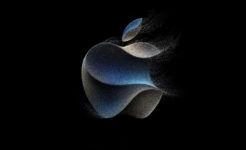
Energy Saver on Mac Computers – Important Features
The Energy Saver preference pane is the heart of controlling the energy use of the MacBook Air, MacBook or MacBook Pro. With an easy-to-use interface, users can manage when their Mac’s hard drives should spin down, as well as when the computer should be put to sleep. It also controls when the display should be turned off if the Mac is not being used. It also has a wide range of additional power-saving options. The settings in Energy Saver preferences affect what happens when the Mac is left unattended for whatever period of time that the user specifies. You can indicate if displays should sleep, or if hard disk(s) should spin down when the computer is idle.
If you set the “Display sleep” slider lower than the “Computer sleep” slider, the display will sleep once the computer has been idle long enough. How long depends on what users set the “Computer sleep” slider to. If the computer remains idle longer, it will go into full sleep mode after display sleep, (unless of course if the user has set the “Computer sleep” slider to Never).
Users cannot set the “Computer sleep” slider lower than the “Display sleep” slider because the display will automatically sleep when the computer does.
The Mac will immediately sleep when its user does any of the following, regardless of your Energy Saver preference settings: Choose Sleep from the Apple menu, click Sleep after pressing the power key, close the lid of a portable Mac.
On all Macs, when the Mac goes to sleep (not just into idle mode or display sleep), the microprocessor goes into what’s called a low-power mode. This means the video output is turned off, a connected display may turn off or enter its own idle state; Apple hard disks spins down; and any third-party hard disks will also spin down.
On portable Macs, the Ethernet port turns off and if applicable, expansion card slots will also turn off. If a built-in modem is present, it will turn off, as well as the AirPort card. The USB ports only respond to the power key on an external keyboard. The optical media drive, if present, spins down and audio input and output turns off as well. Keyboard illumination, if a feature activated on a portable computer, turns off.
A computer uses considerably less power when in sleep mode than when awake. The device will continue to power RAM in sleep mode, so that whatever was in RAM when the computer went to sleep will still be there when the computer wakes. This also means that computers with more RAM use slightly more power in sleep mode.
Keep in mind that portable computers have no network connectivity when in sleep mode. They can however, wake if the Energy Saver option “Wake for network access” is enabled. If you don’t want to interrupt your Internet connection, you should not manually put the computer to sleep and should drag the “Computer sleep” slider to Never.
Tip: To wake a portable Mac from sleep mode with an external keyboard, press the power key on the external keyboard (if it has one) or any key on the built-in keyboard. Other keys on the external keyboard will not wake the portable computer from sleep in this power-saving state. If the computer is not completely asleep, but instead has spun down the hard drive and dimmed the display on idle, pressing any key on either keyboard will work.
Note that if the computer is started in Safe Mode or from a startup disc, default Energy Saver settings are in effect, which may differ from settings you’ve set in your Energy Saver preferences.
See also:
- Apple Encyclopedia: all information about products, electronic devices, operating systems and apps from iGotOffer experts.
- iGotOffer.com: the best place to sell my used MacBook online. Top cash guaranteed. Free quote and free shipping. BBB A+ rated business.






Facebook
Twitter
RSS